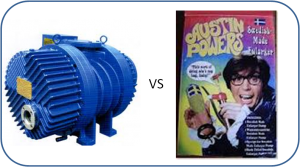Great article by Shari Thurow this morning in Search Engine Land. This is a classic example of the value to be found “walking a mile in your prospective customer’s shoes.” I have made this case many times when talking with our clients about the content writing approach and initial keyword discovery on their websites. As Shari points out, “…it is far too easy to inject our personal opinions onto keyword phrases.”
The important thing to keep at the forefront of your mind when writing is what a typical prospective customer’s mental model may be when searching for your company as well as the conditions under which he or she is searching. Because we here at NetTrack are marketing primarily on behalf of manufacturing companies who sell B2B, that context influences our thinking.
Shari’s excellent visual example of images (and the corresponding associations) associated with a search for “gas” gives a good idea of how broadly people’s expectations and knowledge base may really skew away from your own. From our own archived experience, I recall using two wildly different images associated with a search for vacuum pumps as my visual cue to demonstrate this for clients.
The whole article is well worth a read. I think it will help people appreciate some of the key concepts that go into placing yourself in the mode of a prospective customer.
For manufacturing companies these can include:
- Which vacuum pump did they mean?
- Is the search being conducted at home or at the office? Or both? Not uncommon in a busy over-worked atmosphere.
- Is the search being conducted over a period of 2-3 weeks or even months, such as when a person is researching a service capability before purchasing?
- Is the searcher likely to be a newbie, experienced, or expert within your industry? Often times, your industry or even in-company communications contain tech terms and phrases that don’t resonate with the buyers of your services. Most of us know centrifically wound kraft cores as cardboard tubes.
Think like your customers, try to ask your customers and above all use your analytics information to better understand what someone outside your company might call your services or products.

